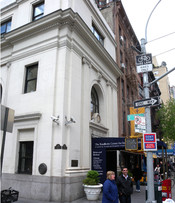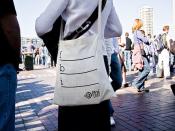Early 1960s > University facilities with huge mainframe computers, like MIT's artificial intelligence lab, become staging grounds for hackers. At first, "hacker" was a positive term that was used to describe a person with a mastery of computers who could push programs beyond what they were designed to do.
[1969] Joe Engressia ('The Whistler', 'Joybubbles' and 'High Rise Joe') considered the father of phreaking. Joe, who is blind, was a mathematics student at USF in the late 1960s when he discovered that he could whistle into a pay telephone the precise pitch --the 2600-cycle note, close to a high A-- that would trip phone circuits and allow him to make long-distance calls at no cost.
[1971] John Draper ('Cap'n Crunch') learns that a toy whistle given away inside Cap'n Crunch cereal generates a 2600-hertz signal, the same high-pitched tone that accesses AT&T's long-distance switching system. Draper builds a blue box that, when used in conjunction with the whistle and sounded into a phone receiver, allows phreakers to make free calls.
[1971] Esquire magazine publishes Secrets of the Little Blue Box with instructions for making a blue box, and wire fraud in the United States escalates. Among the perpetrators: college kids Steve Wozniak and Steve Jobs, future founders of Apple Computer, who launch a home industry making and selling blue boxes.
[1981] Ian Murphy ('Captain Zap') was the first hacker to be tried and convicted as a felon. Murphy broke into AT&T's computers and changed the internal clocks that metered billing rates. People were getting late-night discount rates when they called at midday.
1983 > In one of the first arrests of hackers, the FBI busts six teen-age hackers from Milwaukee, known as the "414s" after the local area code. The hackers are accused of some 60 computer break-ins, including from...


